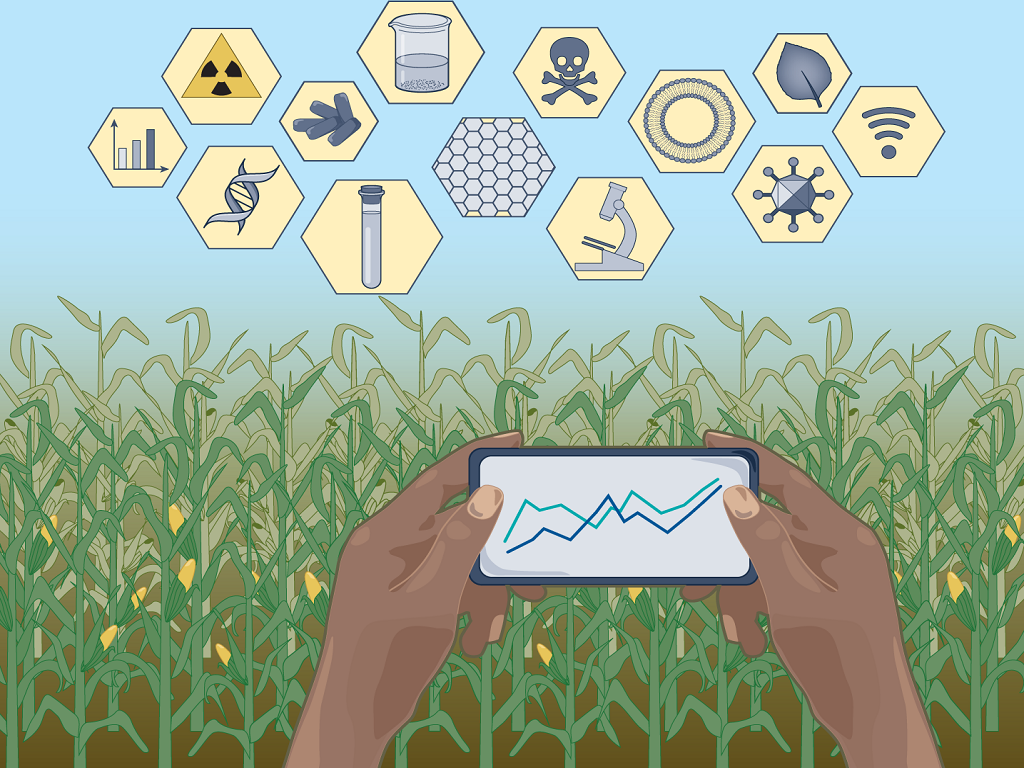
Nanobiosensors can detect a wide range of fertilizers, herbicides, pesticides, insecticides, pathogens, moisture, and soil pH, among many other factors. When used properly and in a regulated manner, nanobiosensors can help to promote sustainable agriculture and increase crop output.
The Merging of Nanotechnology with Biosensors
Yes, Nano biosensors make this possible. A biosensor is an analytical instrument that integrates a biological compound with a physicochemical detector to detect an analyte. Tissues, microorganisms, organelles, cell receptors, enzymes, and other biologically derived materials are examples of sensitive biological materials.
Nanotechnology has emerged as a boon to society, with enormous promise in a wide range of study fields and our daily lives. The potential of Nanotechnology in agriculture sciences is yet to be explored. When compared to conventional biosensors, the use of nanotechnology for biosensor advancements results in an efficient nano biosensor with a small structure.
Understanding the concept of biosensing provides the groundwork for investigating and creating nanobiosensors. Nanobiosensors are sensors constructed of nanostructures.
The Need of Nanobiosensors in Agriculture and Cutting-Edge Applications
The availability of net land and water for agriculture is quickly decreasing, resulting in massive losses in agricultural productivity. Furthermore, the rising concentrations of herbicides, pesticides, and heavy metals on agricultural land are concerning. With the use of Nano biosensors, these challenges may be efficiently addressed.
At the moment, nanomaterial-based biosensors provide intriguing advantages over conventional biosensors. Nanobiosensors have distinct benefits, such as increased detection sensitivity/specificity, and have enormous potential for use in a variety of sectors.
But in this case, we're interested in the role of nano biosensors in agriculture and agro-products. The following are some of the potential applications of Nanobiosensors:
As a Tool to assess Soil Quality
The quantitative assessment of differential oxygen uptake in the respiration of "good microorganisms" and "bad microorganisms" in the soil may be used to detect soil disease. The measurement is carried out as follows: two sensors, one impregnated with "good microorganisms" and the other with "pathogenic organisms," are submerged in a suspension of soil sample in buffer solution, and the oxygen consumption data by two microorganisms is recorded.
As a Tool to detect Contaminant
A variety of nanobiosensors are being developed to detect contaminants, pests, nutrient content, and plant stress caused by drought, temperatures, or pressure. They may also assist farmers to improve their competence by administering inputs just when needed.
As a Tool To maintain Seed purity
Seed production is a difficult process, especially in wind-pollinated crops where pollen can travel large distances. Some of the factors that influence pollen plight are humidity, wind speed, and temperature.
Detecting pollen load that causes contamination is a very effective way of ensuring genetic purity. Bionanosensors can also be used to identify specific contaminating pollen, reducing contamination.
As a Tool for Stress Management in Crops
Crop growth and productivity are subjected to biotic, abiotic, and nutritional stress. Phytohormones, also known as plant hormones, play a big role in the regulation and control of the physiologic developmental process, as well as in response to stress and regulation in plants. In terms of detection, nanobiosensors have played a critical role in resolving problems related to plant hormones disequilibrium and its consequences. It prevents significant plant damage and production reduction by enabling subsequent plant recovery measures to be taken very quickly.











